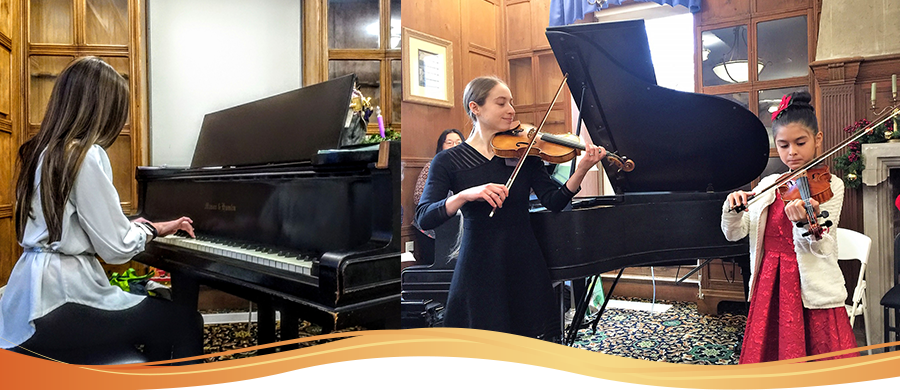
Online
Music for the Community
If you're interested in a particular category, you can sort performances by student age, instrument, singalong music, composer and so on - click on the orange tags under the text. We hope you and your family will enjoy watching our students share their music!
To have each week's videos and accompanying info sent to your inbox*, please subscribe via the orange button.
*Videos are delivered twice weekly; you can unsubscribe at any time, and we will never share or sell your info.
Subscribe to this Page
Displaying items by tag: Skill Development
Day 30: Mozart Violin Concerto #3 (Skills, part 5)
Violinist age 16 plays Mozart's Violin Concerto #3 in G major, 1st movement
Day 29: Seitz Viola Concerto in D (Skills, part 4)
Violist age 15 plays Seitz Concerto in D, first movement
Day 28: Etude by Suzuki (Skills, part 3)
Violinist age 8 plays Etude by Suzuki
Day 27: Go, Tell Aunt Rhody (Skills, part 2)
Violinist age 8 plays Go Tell Aunt Rhody
Day 26 - Early Beginners play Twinkle (Skills, part 1)
We're doing something a little different this week - taking you on a journey from the earliest stages of learning an instrument through to musical mastery. First, our beginners who are just learning to pick out a simple tune...
Pianists age 4 play Twinkle, right hand and left hand


